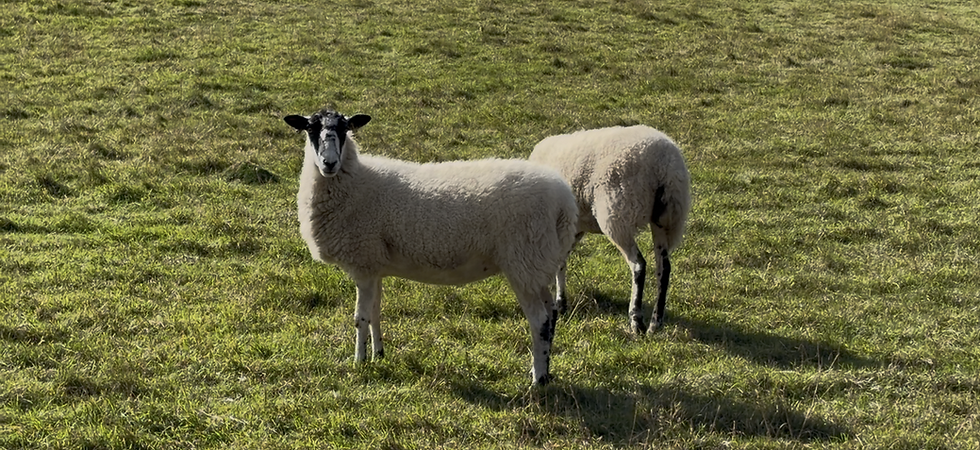SORRY, JAMES
- kradiganscience24
- Mar 7, 2024
- 4 min read
TAVISHI
My friend, James, hates penguins with a burning passion. My friend, Russell, (actually, he's a member of our team! Check out his physics.) loves penguins. My friend Ting Ting also loves penguins. I think it's interesting how people in my life are all obsessive about penguins in one way or another: either they hate them or they love them. Since penguins are such a large part of my life, I figured I'd write a post about them: When I was a kid, one of my favorite movies of all time was Happy Feet. I mean, what's not to love? It's a singing penguin coming of age, complete with a very out of place Antarctic krill and some huge elephant seals.
Penguins are great. My favorite species of penguin is the fairy penguin, a species native to New Zealand otherwise known as the little blue penguin, blue penguin, or kororā. The names are never ending.
The fairy penguin, contrary to popular belief, isn't hanging out with Tinkerbell in its free time, and no, it can't fly. This is Tinkerbell.
This is a fairy penguin. I'm not sure if I see the resemblance...
Fairy penguins are truly amazing creatures: not only do they mate for breeding seasons, but they also are really cool divers. Also, they live in burrows. They're like little rodents, but they swim. Might as well be rodents: they're so tiny, at a little over a foot tall.
Fairy penguin burrows are found on shores, and can often be hidden under vegetation to protect eggs. These burrows function as nests, and provide a home for the penguin and their mate. Male fairy penguins make the burrows, burrowing with their feet. Females choose males on the basis of burrow quality, thus indicating the safety of their future offspring.
While fairy penguin males and females often do stick together for the rest of their life, it's not nearly as assured as swans. During the breeding season, the penguins are faithful to each other, and often for the rest of their life, but some will move on faster than others...
After the penguin has made its burrow, it then has to prove its quality as a bird to the female, through courtship displays. There are two types of courtship displays: ecstatic and bowing displays. Ecstatic displays involve the penguins squawking and outstretching its flippers while bowing its head. Bowing displays, on the other hand, rather than drawing attention to the penguin, involve the penguin using its beak to gesture to the burrow it has created , as if to say, "Personality is more important than looks." Either way, both prove to be effective. If successful pairing occurs, the two will bow their heads at each other and squawk in tandem, proving their compatibility as a couple.
Breeding will occur if the penguins feel safe and comfortable in their environment (highways and loud roads can interfere with this :/ ) and if they are both well fed. After they copulate, the female lays 2 eggs (a startlingly common clutch size!) It's cool how common it is for exactly two eggs to be laid.
Throughout the incubation period of the eggs, both parents share an equal role: while one watches the eggs, the other goes out to sea to feed. After ~35 days, the chicks emerge, black, fluffy, and utterly useless.
For about a week, the chicks cannot see at all, as their eyes are not fully open. However, that quickly changes, and soon, the downy coat is replaced by feathers, the eyes are open, and the chicks are locked in and ready to go.
At five weeks, the chicks are leaving the burrows on their own, and at eight, they bid adieu to Mom and Dad.
Little penguins are so cool. One of the biggest problems they face, however, are oil spills, often causing hypothermia, pneumonia, and toxicity due to consumption. Oil prevents feathers from being functional, removing their insulatory properties, leaving the birds exposed to the elements. Furthermore, when oil is consumed internally, birds experience pneumonia, toxicity, and anemia.
Aside from oil spills, little penguins also face avian malaria, aspergillosis, and more.
Avian malaria is similar to human malaria, in that it spreads from bird to bird by mosquito. Patients with avian malaria are often lethargic and regurgitating. A blood test can detect avian malaria and diagnose it. ELISA and Giemsa blood smears are both used to detect avian malaria, although Giemsa-stained blood smears are less reliable in penguins than in other birds. Penguins are treated with chloroquine, just like humans!
Aspergillosis is a fungal infection, and is far less common than avian malaria in little penguins. Both are relatively uncommon, though. Aspergillosis infects birds through mold, and birds show symptoms of wheezing and difficulty breathing. Fluconazole and other antifungal agents are used to treat aspergillosis in little penguins.
Fairy penguins are great, even though they're not from Neverland. I hope that these penguins continue to fair well in the wild! (Please laugh at my pun.)
Thanks for reading along all this way with me! Email us at kradiganscience24@gmail.com if you want to suggest article topics.








Comments